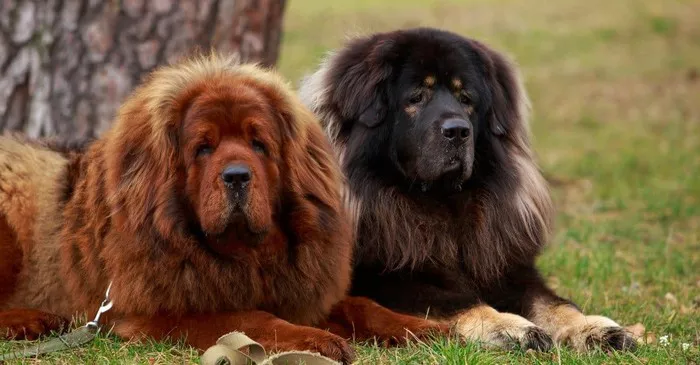Tibetan Mastiffs are majestic and imposing creatures, known for their regal appearance and fierce loyalty. Originating from the Himalayan region, these dogs have captured the fascination of dog enthusiasts worldwide. However, what many may not realize is that within the breed, there exists a spectrum of diversity, encompassing various types and subtypes. In this comprehensive exploration, we delve into the nuances of Tibetan Mastiff types, shedding light on their distinct characteristics, origins, and roles.
Historical Context: Origins and Purpose
To understand the diversity within Tibetan Mastiffs, it’s crucial to grasp their historical context. These dogs have ancient origins, tracing back thousands of years in the Tibetan Plateau. Originally bred by nomadic cultures, Tibetan Mastiffs served multifaceted roles, including guarding livestock, protecting homes, and even accompanying caravans through treacherous mountain terrain.
The harsh environment and varied tasks assigned to these dogs contributed to the development of distinct types within the breed. Over time, selective breeding further solidified these variations, resulting in different physical and temperamental attributes tailored to specific purposes.
Types of Tibetan Mastiffs
Nomadic Type:
The Nomadic Tibetan Mastiff embodies the traditional characteristics of the breed. These dogs were primarily bred by nomadic tribes for herding and guarding livestock across vast, rugged terrains. They tend to have a more athletic build, with moderate bone structure and a well-developed musculature. Nomadic Tibetan Mastiffs display exceptional endurance and agility, traits essential for their historical duties.
This type typically exhibits a thick double coat, providing insulation against harsh climates. Their distinctive mane, or “mane of the lion,” adds to their majestic appearance and serves as protection against predators. Nomadic Tibetan Mastiffs are renowned for their independent nature and keen protective instincts, making them formidable guardians of their flocks and territories.
Monastic Type:
In contrast to the Nomadic type, Monastic Tibetan Mastiffs were selectively bred within monasteries and religious institutions of Tibet. Revered for their spiritual significance, these dogs were entrusted with guarding monastic grounds and serving as companions to monks and lamas. Monastic Tibetan Mastiffs often exhibit a more massive build, with robust bone structure and a powerful frame.
Their temperament is characterized by a calm and composed demeanor, reflective of the tranquil environment in which they were raised. While they possess the same protective instincts as their nomadic counterparts, Monastic Tibetan Mastiffs are renowned for their discernment and introspective nature. They excel as loyal companions and guardians of spiritual sanctuaries, embodying the sacred bond between man and beast.
Show Type:
With the increasing popularity of Tibetan Mastiffs in the Western world, a distinct “Show Type” has emerged. Bred primarily for conformation and aesthetic appeal, these dogs often deviate from their original working roots. Show Tibetan Mastiffs typically feature exaggerated physical traits, such as a heavily wrinkled face, excessive coat length, and exaggerated mane.
While visually stunning, Show Tibetan Mastiffs may lack the robustness and working ability of their nomadic and monastic counterparts. Their temperament can vary widely depending on breeding practices, but they are generally more docile and less inclined towards guarding instincts. Despite these differences, Show Tibetan Mastiffs play a vital role in promoting breed awareness and appreciation on a global scale.
Regional Variations:
In addition to the three primary types, regional variations further contribute to the diversity within the Tibetan Mastiff breed. Different geographical areas within Tibet and neighboring regions have given rise to unique strains, each influenced by local traditions, climate, and terrain.
Himalayan Type:
Found in the high-altitude regions of the Himalayas, the Himalayan Tibetan Mastiff is adapted to extreme cold and rugged terrain. These dogs typically exhibit a thicker coat and sturdier build compared to their lowland counterparts. Himalayan Tibetan Mastiffs are prized for their resilience and ability to thrive in harsh mountain environments.
Plateau Type:
The Tibetan Plateau, often referred to as the “Roof of the World,” is home to a distinct type of Tibetan Mastiff. Plateau Tibetan Mastiffs are well-suited to the semi-arid grasslands and plateaus of Tibet, where they fulfill roles such as livestock guardians and property protectors. They tend to have a leaner build and shorter coat, allowing them to navigate the vast expanses of the plateau with ease.
See Also:Are Tibetan Mastiffs Good with Strangers: A Comprehensive Analysis
Lowland Type:
In regions closer to the foothills of the Himalayas and outside of Tibet, Lowland Tibetan Mastiffs have emerged. These dogs may exhibit characteristics influenced by crossbreeding with other local breeds or adaptation to lower elevations and milder climates. Lowland Tibetan Mastiffs often possess a more moderate build and coat length compared to their highland counterparts.
Conclusion: Celebrating Diversity in the Tibetan Mastiff Breed
The Tibetan Mastiff breed is a testament to the rich tapestry of canine diversity shaped by centuries of cultural heritage and selective breeding practices. From the rugged nomadic dogs of the Tibetan Plateau to the serene guardians of monastic sanctuaries, each type and subtype of Tibetan Mastiff embodies a unique blend of physical traits, temperament, and historical significance.
As stewards of this ancient breed, it is essential to recognize and celebrate the diversity within the Tibetan Mastiff population. Whether as working partners, spiritual companions, or cherished family pets, Tibetan Mastiffs continue to captivate hearts around the world with their unwavering loyalty, innate intelligence, and majestic presence. In embracing the multifaceted nature of Tibetan Mastiffs, we honor their enduring legacy and ensure a bright future for generations to come.
Related Topics:
Do Tibetan Mastiffs Sleep a Lot?
Do Tibetan Mastiffs like Water?
How Vicious Are Tibetan Mastiffs?


























